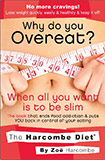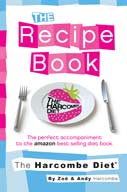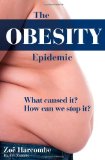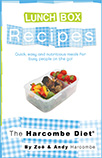Q:
Hi Zoe,
When we cook carrots and onions they become sweet-tasting so does this mean there are more carbs in the cooked version? Or more bio-available carbs/sugars?
Just wondering if eating them raw would impact blood sugar less…?
P
A:
Hi there
It’s not a dumb question – yours never are!
There’s two things of interest here – 1) the carb/sugar content and 2) the Glycaemic Index.
For 1) we can use the USDA database and the numbers are different but negligibly so, but very interesting!…
100g cooked carrots has 8g carb, (3g of which is sugar), 90g water and a gram of protein (ash and minerals will make up any difference).
100g of raw carrots has 10g carb (5g of which is sugar), 88g water and a gram of protein.
SO the cooked carrots have slightly LOWER carb and LOWER sugar than the raw carrots. Two things have happened i) the carrots have gained water in cooking and therefore the 100g contains more of a substance that has no macronutrients (water) and ii) cooked carrots lose some starch into the water – it turns orange – yes?
2) Here’s an extract from my obesity book on the GI…the GI index calculates the opposite and then the variations for GI between different lists of raw and cooked foods are wildly huge.
The glycaemic index was developed by Dr. P. A. Crapo in 1976 and was defined as the area under the blood glucose curve induced by the food tested. I.e. a food would be consumed and the rise in blood glucose would be measured by calculating the total area below the raised blood glucose line. This would include the peak in blood glucose and the time period over which the blood glucose was raised. Glucose was assigned a glycaemic index (GI) of 100 and then all foods were measured relative to this. This index renders the notion of fast and slow release carbohydrates redundant with simple examples such as:
– Fructose has a GI score of 20 and yet is a ‘simple sugar’ (a monosaccharide) as is glucose, which has the defining GI of 100;
– Sucrose has a GI score of 75 as a disaccharide. Disaccharides are supposed to be simple/fast release carbohydrates, like monosaccharides – but the latter have such different GI scores;
– White bread and potatoes have a GI score of 95 and some pulses have a GI of approximately 30 – all examples of polysaccharides.
We also know from glycaemic index studies that cooking foods and processing foods increases their glycaemic index, so cooked carrots have a higher glycaemic index (33 to 85) than raw carrots (16 to 30). One of the problems with the glycaemic index as a tool in weight loss is the huge variation in scores that can be found. In the cooked carrots example just above, the score of 85 for cooked carrots comes from Montignac and the score of 33 was found for peeled and boiled carrots in “the home of the glycaemic index” (www.glycaemicindex.com). Had the carrots been peeled, diced and boiled, their GI would have been 49, according to the same source. This source also lists raw carrots as having a GI of 16 compared to the 30 listed for raw carrots on the Montignac web site. Counting calories is daft enough. If I were going to count anything, I would want it to be substantially more accurate and consistent than the glycaemic index.
So the USDA ‘bible’ says that cooked carrots are lower in carb and sugar and the GI index says cooked carrots will result in a higher area under the blood glucose curve. A good reason to not count anything me thinks!
Nice one
Bye for now – Zoe









(not sure if this message got posted before or not as i don’t know if it went through so please excuse if this ends up being a repeat!)
Thanks very much for a most wonderful website and diet!
is your diet specifically targeted for candida sufferers? i have struggled with candida for a while. i started phase 1 at the beginning of the week and i’m feeling absolutely awful (extremely weak, tired, bloated etc etc) and upon doing research realised that it’s the ‘candida die off’. should i just hang in there and keep going with the diet or should i be doing something different? also, does this mean that i will have to avoid sugar for life? what should i do when going abroad when i’m not on my own turf or events such as weddings etc?
sorry about my lengthy message and thank you for your support!
Phase 1 can be tougher for some than others and the symptoms of fogginess do pass. Stick with Phase 1 until they do go.
Many (most even) decide that sugar is just too sweet for them once their taste buds have adjusted back to real food. This may help for holiday tips… https://www.youtube.com/watch?v=mqPT1_9x640
Can I eat bread in phase 1
No wheat in Phase1